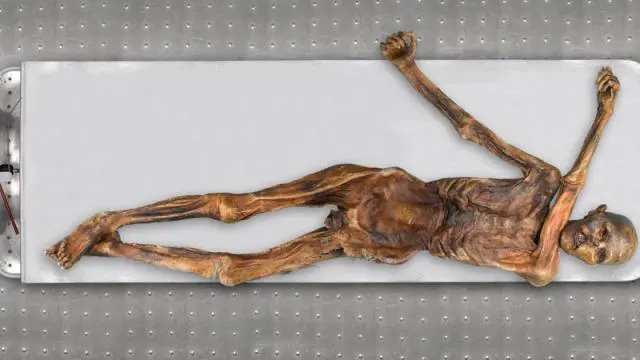Ötzi made international headlines when he was found by a pair of climbers, sticking out of an ice patch high in the Italian alps. When he was found, Ötzi had already been dead for about 5,300 years, but his remarkably preserved remains have since given scientists a unique window into Copper Age Europe.
Now, a team of scientists has revisited Ötzi’s genome, first sequenced in 2012, to determine the individual’s ancestry with greater accuracy (The first analysis of the Iceman’s genome was flawed, as the sample researchers used was contaminated with modern DNA). The team’s findings were published in Cell Genomics.
“We were very surprised to find no traces of Eastern European Steppe Herders in the most recent analysis of the Iceman genome; the proportion of hunter-gatherer genes in Ötzi’s genome is also very low,” said study co-author Johannes Krause, the head of archaeogenetics at the Max Planck Institute for Evolutionary Anthropology, in an institute release. “Genetically, his ancestors seem to have arrived directly from Anatolia without mixing with hunter gatherer groups.”
Ötzi is the world’s oldest glacier mummy. He was found thawing out of an ice patch in central Europe’s Ötztal Alps in 1991, and was dated to between 3350 BCE and 3120 BCE. Since then, the well-preserved mummy has been meticulously studied. Researchers believe he was about 45 years old when he was apparently killed by an arrow to the back.
Ötzi was found with a backpack frame, a fur cap, a quiver, a toolkit comprising a dagger, flakes, and arrows, and an ax, which isotope analysis suggests was made in Southern Tuscany. Meticulous study of his skin revealed Ötzi had 61 tattoos, and study of his stomach revealed the Iceman’s final meal: a hearty assortment of ibex, deer, and cereals.
All this to say, Ötzi left plenty of material for anthropologists and geneticists to work through. But the recent team took a step further by revisiting the genetic information involved in this 5,300-year-old cold case.
For the recent work, Krause’s team sequenced Ötzi’s genome from two samples from the mummy’s left iliac bone and the surrounding tissue. By the team’s measure, the new high-coverage genome has 10 times less contamination than the previously published sequence.
Despite being found in what is now Northern Italy, Ötzi apparently came from a lineage from the east that did not mix much with other European groups. Ötzi’s skin is also darker than researchers previously thought, and his genes suggest that he was predisposed to baldness. That explains why the mummy was found basically hairless, and contradicts previous reconstructions of how Ötzi looked in life.
“It was previously thought that the mummy’s skin had darkened during its preservation in the ice, but presumably what we see now is actually largely Ötzi’s original skin color,” said Albert Zink, an anthropologist at the Eurac Research Institute for Mummy Studies and a co-author of the paper, in the same release.
Ötzi’s remains reside in the South Tyrol Mu-seum of Archaeology in Bolzano (in a temperature-controlled chamber, naturally). And while Ötzi’s case seems unique, a paper published last year in The Holocene suggested that the mummy likely thawed and refroze repeatedly in the 1,500 years following his death.
As Lars Pilø, a glacial archaeologist and the study’s lead author, told Gizmodo last year, “We conclude that the find circumstances surrounding Ötzi are not a string of miracles, but can be better explained by normal processes on glacial archaeo-logical sites.”
So cross your fingers and keep ‘em frozen in that position. More glacial mummies (and archaeological finds) may soon emerge, especially as climate changes hastens the melting of ice patches from Norway to Mongolia.










